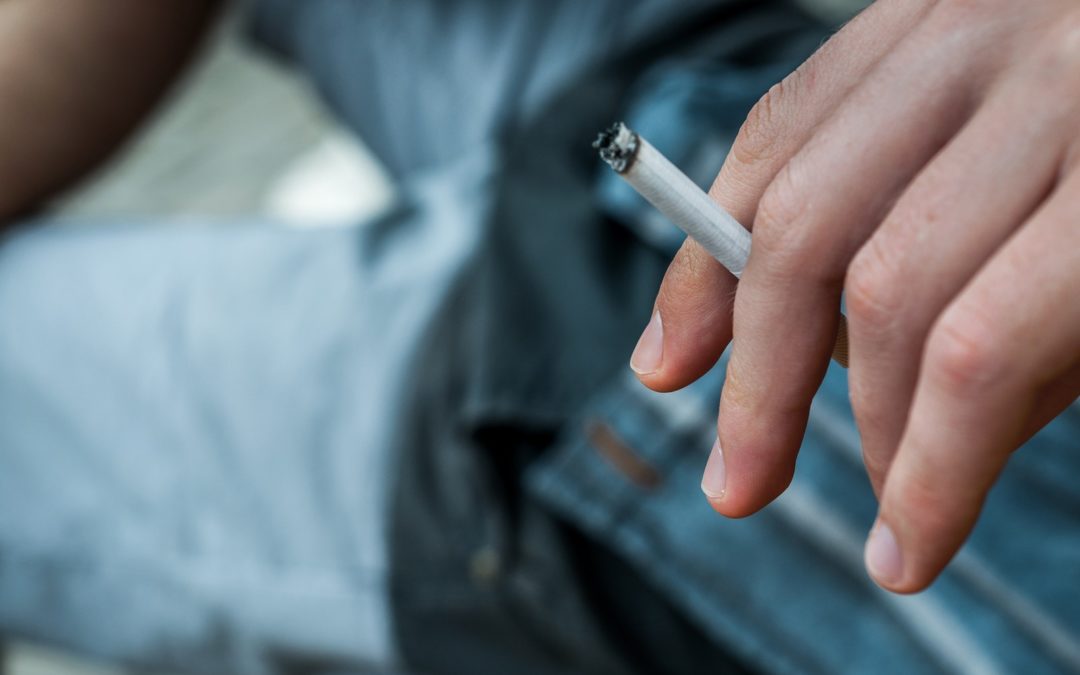Table of Contents

In my experience, one of the most pressing questions parents and guardians ask is “Why do teens use drugs?”. Understanding why teens use drugs is of paramount importance in addressing and preventing substance abuse among this vulnerable population. In this post, I’ll explore some of these factors.
In a Nutshell
Adolescence is a critical period of development, and drug use during this stage can have profound and long-lasting consequences.
By understanding the underlying motives behind teen drug use, whether it be peer pressure, curiosity, self-medication, or emotional escape, we gain insight into the complex interplay of biological, psychological, social, and environmental factors that contribute to substance abuse.
Armed with this understanding, we can develop targeted interventions, education programs, and support systems that effectively address the underlying causes, promote healthy coping mechanisms, and empower teenagers to make informed decisions about their well-being.
Ultimately, comprehending the reasons behind teen drug use enables us to foster a safer and healthier environment for our youth, paving the way for a healthier set of choices.

The Statistics: Drug Use Not Increasing, But More Dangerous
According to a study conducted by the National Institute on Drug Abuse (NIDA) in 2021, drug use among teenagers continues to be a significant concern. The survey found that approximately 43.7% of 12th graders reported using illicit drugs at least once in their lifetime.
Moreover, the Monitoring the Future study, which has been tracking drug use among teenagers for over four decades, revealed that marijuana remains the most widely used illicit drug, with 43.5% of 12th graders reporting past-year use in 2020. These statistics highlight the need for ongoing efforts to prevent and address substance abuse among adolescents.
However, a new positive trend was reported by NIDA in its 2022 Monitoring the Future survey of teens: The percentage of adolescents reporting substance use in 2022 largely held steady after significantly declining in 2020 and 2021 during the pandemic.
The NIDA study showed that In 2022, reported use of any illicit drug within the past year remained at or significantly below pre-pandemic levels for all grades, with 11% of eighth graders, 21.5% of 10th graders, and 32.6% of 12th graders reporting any illicit drug use in the past year.
The survey found that adolescents most commonly reported use of alcohol, nicotine vaping, and cannabis in the past year, and levels generally held steady with those reported in 2021.
However other research has reported a recent dramatic rise in overdose deaths among young people ages 14-18. This increase is largely attributed to illicit fentanyl, a potent synthetic drug, contaminating the supply of counterfeit pills made to resemble prescription medications like benzodiazepines, ADHD medications, and opioids.
| “Though the data indicate that drug use is not becoming more common among young people than it has been in the past, the tragic increase in overdose deaths among this population suggests that drug use is becoming more dangerous than ever before.”
-Dr. Nora Volkow, M.D., NIDA Director
Drugs Used By Teens
Here are some commonly used drugs among teenagers, along with reasons for their popularity and accessibility:
Alcohol
Popularity: Alcohol is legal for adults in many countries, making it easily accessible. Teenagers may find it socially acceptable and readily available at parties, events, or even in their homes.
Accessibility: Teenagers may obtain alcohol through older friends or family members, or they may misuse their own or their parents’ supply.
Marijuana (Cannabis)
Popularity: Marijuana is one of the most commonly used drugs among teenagers due to its perception as being relatively harmless and its recreational effects, including relaxation and euphoria.
Accessibility: Accessibility varies depending on the legal status of marijuana in different jurisdictions. In some areas, it may be legally available for medical or recreational use, while in others, it may be obtained through illicit means.
Prescription Medications
Popularity: Prescription drugs like opioids (e.g., OxyContin, Vicodin) or stimulants (e.g., Adderall, Ritalin) are sometimes abused by teenagers seeking pain relief or to enhance academic performance.
Accessibility: Prescription medications are often accessible within households, as they may be legitimately prescribed to family members or friends. They can also be obtained through illegal means, such as purchasing or stealing them.
Synthetic Drugs
Popularity: Synthetic drugs, such as synthetic cannabinoids (e.g., Spice, K2) or synthetic cathinones (e.g., bath salts), gained popularity among teenagers due to their availability, often marketed as legal alternatives to illicit drugs.
Accessibility: These drugs are typically sold as “legal highs” in convenience stores, gas stations, or online. However, their legality and availability can vary from place to place.
Ecstasy (MDMA):
Popularity: Ecstasy is a stimulant known for its euphoric and empathogenic effects. It is popular in party and rave scenes due to its potential to enhance mood and social interactions.
Accessibility: Ecstasy is often obtained through illicit drug dealers or shared among friends who are part of the same social circles.
Inhalants:
Popularity: Inhalants refer to household or industrial chemicals that are misused to produce mind-altering effects. They are popular among teenagers due to their easy accessibility and low cost.
Accessibility: Inhalants can be found in common household products like cleaning fluids, glue, aerosol sprays, or paint thinners. Because of their widespread availability, teenagers may misuse these substances.
| Dr. Volkow has stated, “It is absolutely crucial to educate young people that pills purchased via social media, given to someone by a friend, or obtained from an unknown source may contain deadly fentanyl.”
And I can’t emphasize enough that the use of any of these drugs can have severe health risks and legal consequences. Education, open communication, and supportive environments play crucial roles in preventing and addressing substance abuse among teenagers.
Triggers and Influences
While much of the focus is on illegal drugs such as marijuana, prescription medications are also commonly abused by teens. There are many factors that can influence or trigger teen drug use, including peer pressure, curiosity, mental health issues, stressors in the home or school environment, and lack of access to appropriate services or resources.
Peer Pressure
This is one of the biggest influences on teen drug use. Teens want to fit in with their peers and may be tempted to try substances if they believe doing so will make them more accepted. They may also feel pressured into using drugs as a means of rebellion against parental authority.
Curiosity
Teens may experiment with drugs out of curiosity or to try and test the boundaries set by parents, guardians, or other authority figures. This is especially true if they have been exposed to substance use in their environment.
Mental Health Issues
Mental health problems such as depression, anxiety, and bipolar disorder can lead to self-medicating behaviors that involve using substances as a way to cope with difficult emotions or traumatic experiences.
Stressors
Stressors in the home or school environment can also put teens at risk for drug use. Bullying, family conflict, poor academic performance, or constant criticism from teachers and peers can all contribute to feelings of isolation, low self-esteem, and drug use.
Lack of Access to Appropriate Services or Resources
This can be a hidden trigger for teen drug use. Teens may turn to drugs as a way to cope with stress or mental health issues if they do not have access to counseling or support groups that could provide them with healthier coping mechanisms.
It’s important for parents and guardians to be aware of the triggers and influences that can lead teens down the path of substance abuse.

Make Yourself Aware
There is no single cause for teen drug use; rather it is an array of factors coming together that can lead a teen to start using drugs.
It’s important for parents and guardians to be aware of the potential risks and triggers for teen drug use in order to help create a safe home environment where teens are supported without judgment and provided access to appropriate resources when needed.
Create an Open Dialogue
| Drug use among teens can have serious health and legal consequences, so it’s important that parents and guardians create an open dialogue with their teens about the potential risks associated with substance abuse in order to help them build the skills they need to make healthy decisions.
Help is Available
If you suspect your teen is using drugs, reach out for help right away.
At Clearfork Academy we offer a wide range of professional treatment options that can help teens address their issues and break the cycle of drug use. With the right support, teens can break the cycle of substance abuse and lead healthy, happy lives. Contact us today.
Key Takeaways
- Understanding the most commonly used drug by teens helps parents and guardians stay informed.
- Peer pressure, media influence, and emotional triggers contribute to teen drug use.
- Recognizing warning signs is crucial in identifying problems and being able to act before addiction becomes more severe.
Resources
- National Institute on Drug Abuse. (NIDA). Parents and Educators pages
- National Institute on Drug Abuse (NIDA). (n.d.). Understanding Drug Use and Addiction
- Office of Adolescent Health (OAH). (n.d.). Talking to Teens About Drugs

Originally from the Saginaw, Eagle Mountain area, Austin Davis earned a Bachelor of Science in Pastoral Ministry from Lee University in Cleveland, TN and a Master of Arts in Counseling from The Church of God Theological Seminary. He then went on to become a Licensed Professional Counselor-Supervisor in the State of Texas.
Austin’s professional history includes both local church ministry and clinical counseling. At a young age, he began serving youth at the local church in various capacities which led to clinical training and education. Austin gained a vast knowledge of mental health disorders while working in state and public mental health hospitals. This is where he was exposed to almost every type of diagnosis and carries this experience into the daily treatment.
Austin’s longtime passion is Clearfork Academy, a christ-centered residential facility focused on mental health and substance abuse. He finds joy and fulfillment working with “difficult” clients that challenge his heart and clinical skill set. It is his hope and desire that each resident that passes through Clearfork Academy will be one step closer to their created design.
Austin’s greatest pleasures in life are being a husband to his wife, and a father to his growing children. He serves at his local church by playing guitar, speaking and helping with tech arts. Austin also enjoys being physically active, reading, woodworking, and music.




